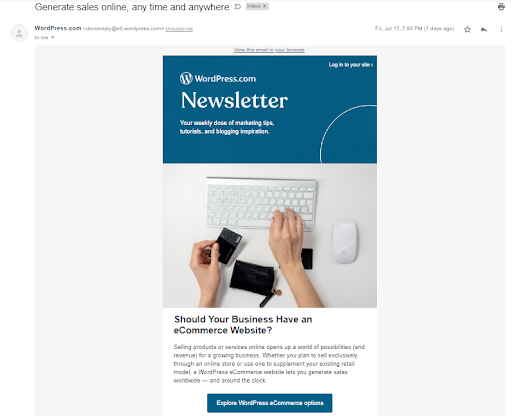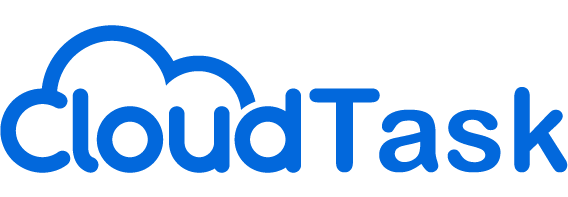An effective email marketing strategy is an amalgamation of different types of emails that nurtures your leads from website visitors to potential business clients. Clearly, there are a lot more touch-points than just writing a clever subject line in order to generate B2B sales.
If you have an outsourced sales team to carry out your B2B email marketing, they might already be aware of the top-notch strategies. And if you are creating a B2B sales strategy by yourself, you must train your content and sales team to make them understand the subtle intricacies of B2B versus B2C email marketing techniques.
When we talk about B2B email marketing, things take a different route as compared to B2C marketing. In B2C email marketing, you try to connect with your consumers in an emotive manner. Your focus is to sell the benefits that your consumers will get if they purchase your product. On the other hand, B2B email marketing is more based on logic and reasoning.
In terms of the effectiveness of B2B email marketing, statistics say, “80% of business professionals believe that email marketing increases customer retention”.
.png)
Moreover, it takes a longer time to qualify a B2B prospect and turn them into potential prospects. In B2C email marketing, you converse directly with the prospects but in the B2B scenario, there is more than one decision-maker.
Why Your Company Should Have a B2B Email Marketing Strategy
Nowadays more than ever, it’s vital that your organization enact a dedicated B2B email marketing strategy.
The following statistics provided by Salesforce.com, a global customer relationship management (CRM) company specializing in cloud computing, will help us paint a clear picture that faithfully show the impact a well-executed B2B email marketing campaign can generate:
– For every $1 spent, $44.25 is the average return on email marketing investment (Experian).
– 77% of consumers prefer to receive permission-based marketing communications through email (ExactTarget).
– 72% of B2B buyers are most likely to share useful content via email (Earnest Agency).
Simply put, these statistics prove that B2B email marketing means more engagement, more engagement means more leads, more leads mean more conversions, and more conversions means more revenue
B2B email marketing is part of your inbound toolbox, and you should leverage this tool as part of your overall marketing strategy. Just take a look at what HubSpot’s got to say:
“While blogs and social media are winning larger and larger portions of B2B marketing budgets, email marketing remains an important and cost-effective solution to drive lead generation efforts and build long-lasting relationships with clients. An expertly crafted marketing email can initiate the sales conversation with valuable leads and help you stay connected to your most profitable clients”.
So let’s dive right into the main part. Here are some effective ways to carry out your B2B sales via email marketing.
Use a Comprehensive Email Marketing Tool
Email service providers are not only a cost-effective way but also entail unique capabilities to optimize your emails at each possible touchpoint. Of course, no marketer sends thousands of emails manually in one sitting.
Email marketing tools are not just meant for sending a huge amount of emails to a larger audience but to provide value to your prospects, segment your audience base, maintain email lists, run promotions, send bulk email blasts, ensure email deliverability, run email automation, track metrics, and more.
These marketing tools provide ample options to customize your emails and ensure that the emails are mobile responsive. Statistics say, “35% of business professionals check email on a mobile device.” Therefore, it becomes essential to fine-tune your emails at all possible touch-points.
Check your Lead Generation Strategy
The biggest loophole in your lead generation strategy comes in when you do not optimize your landing pages or forms. Faulty messaging has a direct impact on your conversion rates.
Let’s take an example. You recorded 1000 visitors to your landing page and you are paying $2 for each visit, Now let’s take your form conversion rate at 1%. It amounts to 10 leads at $200 from your pocket. And if your conversion rate was more than 1%, let’s say 4%, it amounts to 40 leads at a CPL of $50
[Cost per lead is calculated as the total cost of the campaign divided by the number of leads generated].
So do you understand the importance of your lead generation forms?
Most email marketing tools provide an option to build custom forms and landing pages with an easy drag-and-drop feature. An ideal lead generation form should not exceed more than 2 or 3 fields.
Moreover, if you want to truly achieve your targets, you can go for an outsourced sales team. They are trained in this particular field and have the right knowledge and expertise to generate high-quality leads. This is because 61% of B2B marketers say that generating high-quality leads is the most challenging.
Once you have a good number of potential leads you may segment them into different target groups according to their industry, occupation, location, or more.
Employ an Effective Lead Nurturing Process
In order to generate B2B sales, you will require a lot of patience as it takes more time than the B2C sales cycle. So before you plan on any campaign, make sure to have your buyer’s persona ready. Knowing your target audience becomes more critical in B2B email marketing.
The key strategy to have an effective lead nurturing process is to take your potential prospects through a unique journey of all the three stages, namely, awareness, consideration, and decision making. The best way to nurture your leads is to run a series of email drip campaigns according to these stages.
In the awareness stage, you need to make them aware of your brand, thereby, you should send them educational content. This type of content makes the prospect’s subconscious aware of the problems they are facing. For instance, you can send them educational videos, blog posts, infographics, or more.
In the consideration stage, the prospects have identified different sets of problems they are facing. They want to know the possible course of action. Here, you need to unlock your premium resources like marketing playbooks, ebooks, white papers, case studies, short webinars, your brand’s email newsletter, and more. In fact, “40 percent of B2B marketers say email newsletters are most critical to their content marketing success.”
In the decision stage, encourage your prospects or nudge them towards your final goal. This is the stage where you need to send your product demos, free trials, discount offers, and well-planned pricing tiers.
Craft Framework and Content of Email
Crafting an email for B2C customers or B2B has one thing in common: Personalization elements. The tone and the actual content in B2B emails differ from a B2C email but you still need to provide value to your prospects and keep them engaged.
Tailoring your message according to the prospect’s persona is what you should focus on. An effective B2B email marketing campaign should focus on positioning its brand as a thought-leader in the industry. Your emails must provide information and make the prospects realize their pain points.
You bear heavy costs to bring in your visitors to this stage of your B2B sales funnel, therefore, you need to make sure you never miss any opportunity to fulfill your sales target. Moreover, if you are confident in your content, you may try A/B testing to discover more about your prospect’s behavior. For instance, try different subject lines or change the content resources in the different sets of emails.

Check Email Deliverability Factors
This part has a lot of checkpoints. You need to make sure your emails actually land in your prospect’s inbox. Let’s pick up the three most important scenarios.
First is the chances of your email to land in the spam folder. It happens to a lot of marketers, thereby, decreasing the opportunities to close a deal. Your emails pass a variety of spam authentication tests and filters. For instance:
- DomainKeys Identified Mail (DKIM) checks your domain authenticity
- Sender Policy Framework (SPF) keeps a strict check on forgery of email addresses and ensures you are not violating your domain by using more than 10 email servers
- Domain-based Message Authentication, Reporting & Conformance (DMARC) is a combination of both where you validate the above mentioned and that you are only sending authenticated emails to your prospects
You also have to comply with different spam laws like GDPR, CAN-SPAM act, and more. Also, make sure your email content, images, and subject lines are well-optimized are not misleading the prospects or redirecting to malicious sites. Lastly, send bulk emails without spamming your B2B prospects.
Second is employing effective email service providers. There are ample email marketing tools available at affordable rates. But not all of them ensure the best email deliverability. So, if you are going for one, make sure to do your research and choose a reputed email marketing software. Even if you have an outsourced sales team, make sure they have all the required email marketing tools.
The third is optimizing your email send time. The time of sending your emails differs in the B2B and B2C scenarios. According to MarketingSherpa, 55% of B2B marketers rated Sunday least effective to send emails. Moreover, if you work for a marketing agency or consultancy, the most effective day to send in your emails was recorded as Wednesday.
Other than stating the statistics, you must carry out your own research or tests to figure out the best time to send your emails.
Track Results and Re-engage Prospects
Last but not the least. Tracking your email metrics can be the game-changer for your business. If you are using an email marketing tool, chances are you get a detailed report for your email’s performance.
Checking your open rates, click-through rates, heatmaps, bounce rates or more helps you determine the loopholes in your B2B email marketing strategy. Analyzing what went best and worse can help you in your next email campaign.
What’s done is done. Of course, you can make changes in your next email campaign but what about the emails that have already reached your prospects? They did not engage with your email with much enthusiasm. Therefore, you need to send them a re-engagement email.
You must find a way to pull them back into the game. There are several ways to do that. For instance, you can offer them a deal that they can’t deny, a conversational email to check on them, or the very famous: “we haven’t seen you in a while”. Look at the tone in this example by todoist:

A Wrap-up
The journey of first-time website visitors to becoming your long term business prospects lies in developing a relationship and providing value through your content. Working on your B2B sales funnel or marketing strategy follows a virtuous cycle. So, let your business grow through your experience.
Author’s Bio:
This blog is written by Shivani Srivastava. A content marketer by heart, Shivani is passionate about writing anything in the field of the technological landscape. She’s written this guest blog for SendX: Email Marketing Software.





